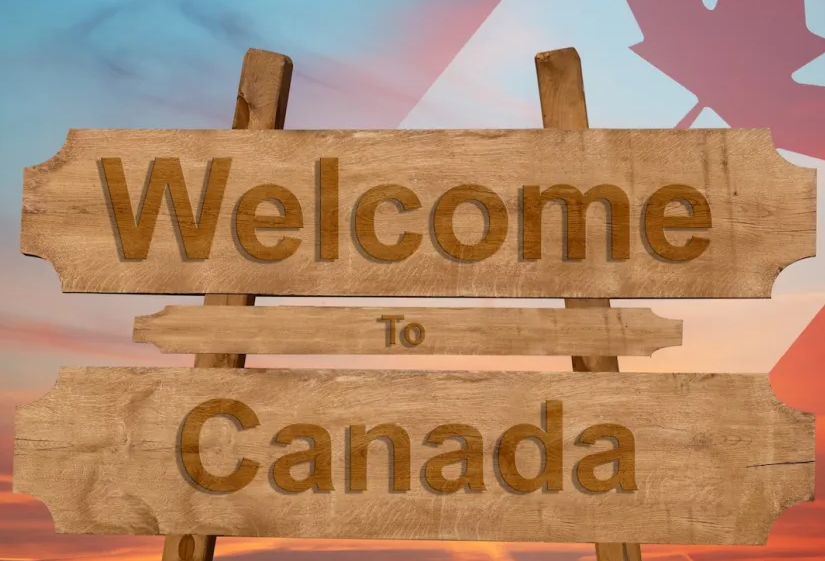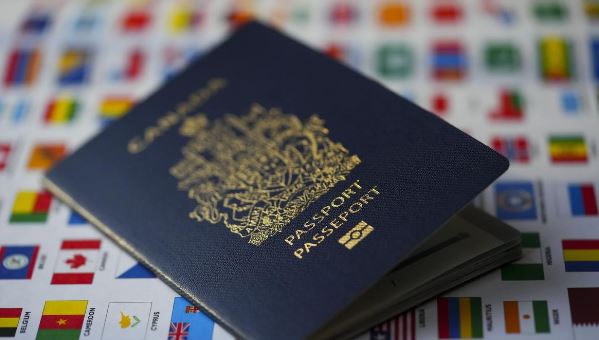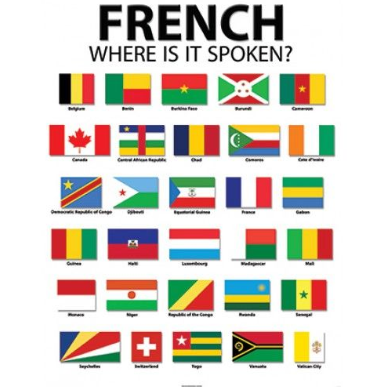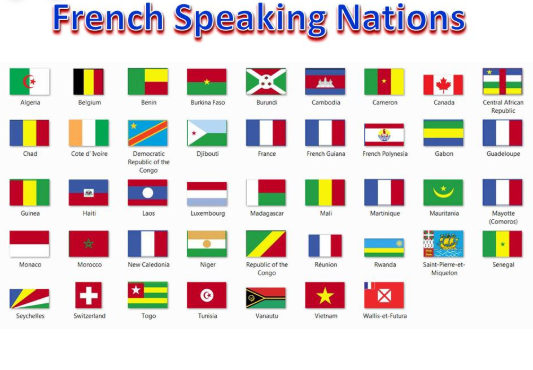Are you interested in living and working in Canada permanently? If yes, then you need to obtain a Canada Permanent Resident (PR) visa. This visa allows you to enjoy the same privileges as a Canadian citizen, including access to government-funded healthcare and social services.
However, obtaining a PR visa is not an easy process, and you need to meet certain eligibility criteria and submit several documents.
In this blog post, we will take you through the Canada Permanent Resident visa process, eligibility criteria, application requirements, and important details that will help you achieve your dream of living in Canada as a permanent resident.
1. Introduction to Permanent Residence in Canada
To begin with, let’s discuss the basic concept of Permanent Residence in Canada, which is an immigration status that enables individuals to stay indefinitely in Canada. To become a permanent resident, you must apply for and be granted permanent resident status by the Immigration, Refugees and Citizenship Canada (IRCC). This status grants you many benefits, such as the right to live, work, and study in Canada, as well as access to social services and healthcare.
To be eligible for permanent residence, the IRCC has outlined several eligibility criteria, including education, work experience, language proficiency, and age. One of the most popular ways to obtain permanent residency is through the Express Entry system, which manages applications for skilled workers.
Additionally, there are several other routes to permanent residency, such as obtaining a spousal visa or through investment in Canada. These options come with their own set of requirements, so it’s important to conduct thorough research to determine which option suits your needs best.
Moreover, once you have obtained permanent residency in Canada, you must maintain your status by fulfilling certain requirements, such as residing in Canada for two out of five years, and passing a language proficiency test.
Consequently, obtaining permanent residency in Canada is a wonderful opportunity for individuals seeking to build a new life in a welcoming and inclusive environment. With the right information and guidance, the process can be smooth and successful, leading to a bright future in Canada.
2. Eligibility Criteria for IRCC Express Entry
To be eligible for IRCC Express Entry, you must first meet the requirements for any of the federal economic immigration programs. These include the Federal Skilled Worker Program, the Federal Skilled Trades Program, and the Canadian Experience Class.
Once you have determined which program you are eligible for, you can create an online profile with IRCC Express Entry. Your profile will be ranked based on a points system, taking into account factors like age, education, language proficiency, work experience, and other adaptability factors.
If you have a qualifying job offer from a Canadian employer, you will receive additional points towards your score. However, note that having a valid job offer is not a requirement for Express Entry.
The highest-scoring candidates will be invited to apply for permanent residence through regular draws from the pool of applicants. If you receive an invitation to apply, you will have 60 days to submit your application for permanent residence.
Overall, the IRCC Express Entry system is a great option for those looking to immigrate to Canada quickly and efficiently. Keep in mind that meeting the eligibility criteria and scoring high on the points system are vital to being successful in the application process. But with the right qualifications and documentation in place, you too can achieve permanent residence in Canada.
3. Benefits of Permanent Residence in Canada Through Investment
If you are considering obtaining permanent residence in Canada through investment, there are several benefits to keep in mind. First and foremost, this method provides a faster route to permanent residency compared to other immigration programs. As a result, you can enjoy the opportunities and benefits of living in Canada much sooner.
Additionally, obtaining permanent residency through investment can open up various economic and business opportunities in Canada, allowing you to establish and grow your business here. This method also provides a pathway to citizenship, allowing you and your family to become Canadian citizens after meeting certain residency requirements.
To be eligible for permanent residence through investment, you must meet specific requirements, such as investing a minimum amount in a Canadian business, possessing relevant work experience, and meeting the necessary language and education criteria. Working with a reputable Canadian immigration consultant can help you navigate the application process and ensure your eligibility.
In conclusion, obtaining permanent residence in Canada through investment provides various benefits, including a quicker route to residency, economic opportunities, and ultimately citizenship. If you meet the eligibility criteria and have a strong desire to live and invest in Canada, consider pursuing this option to make your dreams of living in Canada a reality.
4. Spousal Visa for Permanent Residence in Canada
To sponsor your spouse or partner for permanent residence in Canada, you must meet certain eligibility requirements. As mentioned earlier in this blog, you must be 18 years of age or older and a Canadian citizen or permanent resident. You must also demonstrate that your relationship is genuine and that you will be able to financially support your partner.
To apply for a spousal visa, you will need to submit an application to Immigration, Refugees and Citizenship Canada (IRCC). The application will require you to provide proof of your relationship, including marriage and birth certificates, as well as evidence of financial support. It is important to ensure that all documents are accurate and up to date to avoid delays in the processing of your application.
Once your application has been submitted, it will be reviewed by an IRCC officer. They may request further information or ask you to attend an interview to assess the genuineness of your relationship. If your application is approved, your spouse or partner will be granted permanent residence in Canada.
It is important to note that the spousal visa application process can take several months to complete. However, there are options for obtaining a temporary work permit or visitor visa to allow your partner to enter Canada while the permanent residence application is being processed.
Overall, the spousal visa process can be complex and confusing. It is recommended that you seek the guidance of an experienced immigration lawyer or consultant to ensure that your application is complete and accurate. With the right support, you can successfully sponsor your spouse or partner for permanent residence in Canada.
5. Selection Process for Express Entry Immigration System
How to Successfully Navigate the Selection Process for Express Entry Immigration System in Canada
To have a fruitful permanent resident visa application via the IRCC Express Entry immigration system in Canada, you need to have a clear understanding of the selection process. This ensures that you are eligible for the application and meet all the necessary criteria.
Firstly, you need to create an Express Entry profile and submit it online. This profile must outline your language abilities, work experience, education, age, and other necessary factors such as skills transferability. The system will automatically give you a Comprehensive Ranking System(CRS) score based on these factors.
The next step is to wait for the Express Entry pool to select you if you meet the cut-off criteria based on the CRS score. This is usually determined by the number of spots available in the pool, which can vary from time to time. Regular rounds of invitations hold based on the CRS scores, and only the highest-ranking candidates receive invitations to apply for permanent residency.
To increase your chances of getting selected, you may have to consider improving your language proficiency, gaining more work experience, or upgrading your education. These improvements increase your CRS score and chances of getting invited to apply.
If you receive an invitation to apply, you must submit a complete application form within 60 days for permanent residence. In some instances, you may be required to complete a medical examination, language proficiency test, and police background check.
In conclusion, to make your permanent resident visa application via the IRCC Express Entry immigration system a success, you must ensure that you meet all the necessary requirements and criteria. Having a good understanding of the selection process helps you to be well-prepared and position yourself in the best way possible for success.
6. Requirements for Permanent Residence Card
To obtain a Permanent Residence Card in Canada, there are certain requirements that you must fulfill. Firstly, you must be a permanent resident of Canada and have fulfilled the residency obligation of being physically present within Canada for at least two years in a five-year period.
Next, you need to ensure that all your taxes and dues are paid to the Canadian government. Any debts or unpaid taxes can result in the rejection of your application. Furthermore, you need to provide valid identification documents such as a passport, provincial ID, and other similar documents.
Moreover, you must also pass a language proficiency test to prove that you are proficient in English or French, which are the two official languages of Canada. This test is mandatory for all applicants between the ages of 18 and 54.
Lastly, you need to submit a completed Permanent Residence Card application along with the required documents, such as proof of residency, tax payments, and language test results.
Once your application is approved, you will receive your Permanent Residence Card, allowing you to reside and work in Canada permanently. It is important to renew your card before it expires to ensure that you maintain your permanent resident status.
Obtaining a Permanent Residence Card is a crucial step toward becoming a Canadian citizen, and the requirements listed above must be fulfilled to ensure a smooth application process. By meeting these requirements, you can enjoy the benefits of being a permanent resident in Canada and start building a new life in this beautiful country.
7. General Eligibility Requirements for Work Permit
To obtain a work permit in Canada, there are several general eligibility requirements that you must fulfill, regardless of the type of work or where you apply. The first requirement is that you must be able to prove to the Canadian government that you will leave the country once your work permit expires. This means that you must demonstrate the intention to return to your home country or another country where you have permission to stay.
Secondly, you must have enough funds to support yourself during your stay in Canada. This requirement is intended to ensure that you can cover your living expenses, including accommodation, food, and transportation, without relying on public resources.
To apply for a Canadian work permit, you can either do it online or in-person at a visa office. You will be required to pay a fee, which varies depending on the type of work permit you need, and provide documentation such as a valid passport, a job offer from a Canadian employer, and biometric information.
The eligibility requirements for work permit applicants do not make them eligible for permanent residency in Canada. If you are interested in becoming a permanent resident, you must apply for a separate permanent resident visa.
Overall, Canada offers a comprehensive solution for obtaining a work permit, including clear eligibility requirements and fees. If you have any questions or need assistance with the application process, contact Y Axis Operation Consultants. They can help you navigate the process and ensure that you have the best chance of success.
8. Visa Requirements for Canadians to Visit the US During the Application Process
If you are a Canadian citizen and in the process of applying for a permanent resident visa for Canada, you may need to travel to the US for any reason, such as business or personal reasons. However, you may face some visa requirements to enter the US during the application process. Here’s what you need to know:
Firstly, if you plan to stay in the US for a short period, typically less than 90 days, you may be eligible for the Visa Waiver Program (VWP). It allows citizens of certain countries, including Canada, to visit the US for tourism or business without obtaining a visa. However, you need to obtain an Electronic System for Travel Authorization (ESTA) approval prior to traveling. You can apply online for ESTA, and it usually takes a few minutes to obtain approval.
Secondly, if you plan to stay in the US for a longer period, you may need to obtain a nonimmigrant visa. To do so, you will need to schedule an appointment with the US Embassy or Consulate in Canada and provide the required documentation, including a valid passport, application form, and evidence of ties to Canada, such as job, family, or a permanent residence application.
Thirdly, if you applied for a permanent resident visa for Canada and have not received approval, you may be considered an intending immigrant, which may make it more difficult to obtain a nonimmigrant visa to enter the US. Therefore, it is important to provide clear evidence that you intend to return to Canada and that your trip to the US is temporary.
In conclusion, if you need to travel to the US during the application process for a permanent resident visa for Canada, you may face visa requirements. However, by following the above steps and providing clear evidence of ties to Canada, you can increase your chances of obtaining a nonimmigrant visa and entering the US.
9. Application Requirements for Temporary Resident Visa/Study/Work Permit
To apply for a temporary resident visa, study permit or work permit in Canada, you must fulfill certain requirements. In this section, we will guide you through the application process for each of these permits.
If you are applying for a temporary resident visa, you must provide the following documents:
1. A valid passport or other travel document
2. Proof of financial support (such as bank statements)
3. Photographs and biometrics
In addition, you may need to provide additional documents depending on your country of origin, the purpose of your visit, and your personal circumstances.
If you are applying for a study permit, you must provide:
1. Proof of acceptance by a designated learning institution
2. Proof of financial support
3. A valid passport or other travel documents
4. Photographs and biometrics
You may also need to provide additional documents such as transcripts, medical certificates, and police certificates.
If you are applying for a work permit, you must provide:
1. A job offer from a Canadian employer
2. A positive Labour Market Impact Assessment (LMIA), unless your job is exempt
3. Proof of your qualifications for the job
4. A valid passport or other travel documents
5. Photographs and biometrics
You may also need to provide additional documents such as language test results and criminal record checks.
It is important to note that the application process differs depending on the type of permit you are applying for. In addition, the requirements may vary depending on your individual situation. This is why it is important to seek the guidance of a professional immigration consultant who can provide the most up-to-date information and help you with your application.
10. Legal Permanent Residence (Green Card) Process for Asylum Seekers in Canada.
If you are an asylum seeker in Canada, you may be eligible to apply for permanent residence through the legal permanent residence (green card) process. First, it is important that your claim for asylum has been approved by the Immigration and Refugee Board. Once you have received this approval, you can apply for and obtain permanent resident status in Canada.
The process for obtaining a legal permanent residence (green card) in Canada as an asylum seeker is similar to other economic permanent residence pathways. You will need to meet certain eligibility requirements and provide the necessary documents to apply.
To begin the process, you must submit an application through the Immigration, Refugees, and Citizenship Canada (IRCC) website or by mail. The application will require you to provide personal information, details about your asylum claim, and proof that you meet the eligibility criteria.
Eligibility criteria include factors such as language proficiency, educational qualifications, work experience, and adaptability to life in Canada. You may also need to undergo a medical exam and provide police certificates.
It is important to note that the process of obtaining a legal permanent residence (green card) in Canada as an asylum seeker can take time. You may need to provide additional documentation or attend an interview as part of the processing.
However, once you have obtained permanent residence status, you can move freely within Canada and enjoy the benefits available to all permanent residents, including access to healthcare, social services, and education.
In summary, if you are an asylum seeker in Canada and have been approved for refugee status, you may be eligible to apply for permanent residence through the legal permanent residence (green card) process. Be sure to meet the eligibility criteria and provide all required documentation to increase your chances of a successful application.
[/et_pb_text][/et_pb_column][/et_pb_row][/et_pb_section]







